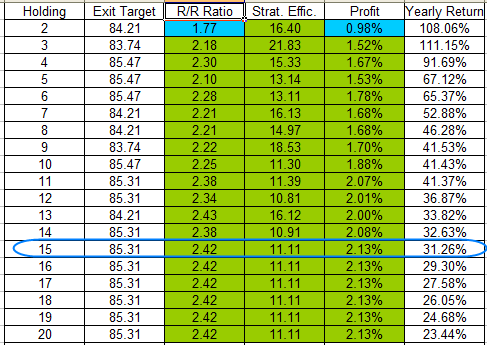As I explained it in the weekly comment, the market is overextended on the downside and could easily bounce from here.
This is the case of the Russell 2000 (and its leveraged ETF TNA.)
We can see that TNA is at the bottom of its envelope. For the past six months, such a position has led to interesting buying opportunities. The buy zone is shown below. It is interesting that the optimal holding period is 15 days, with a target to $85.31





 Reply With Quote
Reply With Quote
